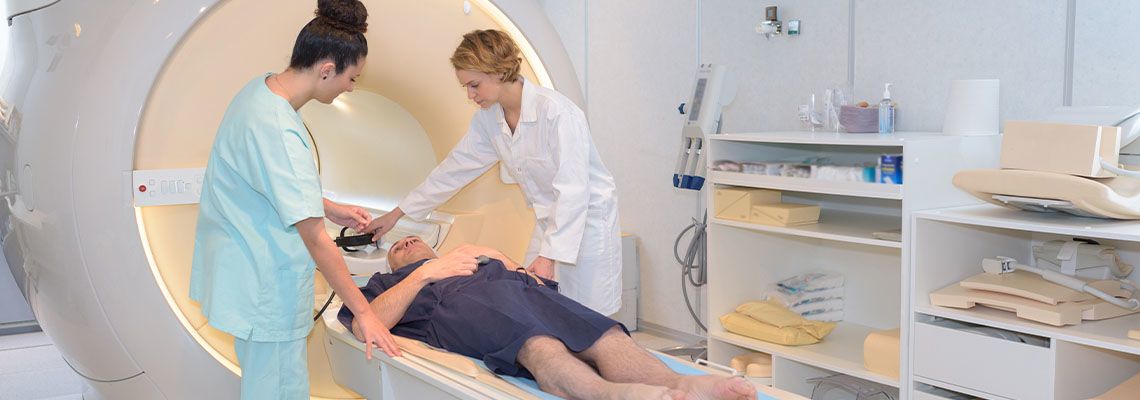
Can an MRI Show Injuries Missed on an X-Ray?
An X-ray is a routine procedure used by medical professionals to diagnose potential health problems and exclude conditions. While this tool is an essential part of the diagnostic process after accidents and traumatic events, it may not always be 100% accurate in detecting certain conditions. Failures in X-rays can lead to delayed diagnosis or misdiagnosis, both of which can negatively impact your chances of a full recovery. For this reason, an MRI scan may be better suited.
Depending on the type and severity of the injury, diagnosis may include both an X-ray and an MRI scan to see a complete picture of what the patient’s injuries are. If a patient undergoes an X-ray that shows nothing but continues to experience pain or discomfort, getting an MRI scan could show injuries missed on an X-ray because MRIs tend to be more detailed than X-rays.
Our personal injury attorneys at Ellis & Thomas, PLLC, represent injured victims in Houston, Texas, and the surrounding areas, including Fort Bend County, Montgomery County, Harris County, and Brazoria County. We can help you ensure that you receive an accurate diagnosis for your injuries and pursue the compensation to which you are entitled.
The Difference Between X-Rays and MRIs
Medical professionals follow specific protocols when diagnosing patients after traumatic events and use a wide range of diagnostic methods and tools to detect possible injuries. The diagnostic tools used will depend on the injured body area and the patient’s symptoms. After performing an examination, the doctor may order an X-ray, MRI, CT scan, or other procedures to diagnose the injury. Since the focus of today’s discussion is X-rays and MRIs, let’s explore the differences between these two common diagnostic methods:
X-rays are a quick and painless procedure that involves the use of a safe amount of radiation to produce images. X-ray machines use radiation beams, which cannot be seen by the naked eye, to pass through the patient’s body. Different parts of the body absorb X-rays at different rates. Dense parts of the body, such as bones, appear as clear white areas on images, while softer parts, including the heart and lungs, show up as darker areas. However, X-rays are mainly used to examine the patient’s bones and joints and may not be effective in detecting a number of injuries and conditions.
Magnetic resonance imaging (MRI) scans use powerful magnets and computer-generated radio waves to show images of the patient’s body structures. MRI scans are a non-invasive procedure that allows medical professionals to look at nearly every structure and organ inside the body. While X-rays are a great tool for diagnosing bone fractures and other problems with bones and joints, MRI scans are used to diagnose tumors, heart conditions, lung conditions, brain conditions, and other conditions in organs and structures inside the patient’s body, according to the National Institutes of Health.
If a medical professional orders an X-ray that does not reveal any problems and a patient goes about their life thinking they are fine – when, in reality, they are not – serious conditions can go undetected, worsening the patient’s long-term prospects and the chance of making a full recovery. When an X-ray does not catch anything but the patient continues to experience the same symptoms or their condition worsens, the doctor may order an MRI scan.
The Advantages and Disadvantages of X-Rays vs. MRIs
When weighing the advantages and disadvantages of an MRI scan and X-ray, you might want to consider:
Availability. X-rays are one of the most widely available diagnostic tools. The same cannot be said about MRIs as not all hospitals and imaging facilities have MRI machines.
Cost. When paying medical bills out of pocket, the cost of undergoing an MRI scan or X-ray can be a factor. Typically, X-rays tend to cost less than MRIs.
Time. The two diagnostic tools also differ in terms of the time necessary to complete the procedure. While X-rays take seconds, an MRI lasts anywhere from 15 to 90 minutes depending on the area to examine.
Safety. X-rays are associated with safety concerns because the procedure involves the use of a small dose of ionizing radiation to produce images. When undergoing an MRI scan, a patient is not exposed to radiation.
Detailed images. When a patient is suspected to have suffered a fractured bone or other problems with bones or joints, an X-ray can be a good choice. By contrast, MRIs tend to offer clearer and more detailed images of softer tissues and organs, including the brain.
If an X-ray showed nothing but you still feel discomfort or pain, you might want to ask your doctor about additional testing, including an MRI scan. In many cases, it may also be advisable to get a second opinion from another doctor to make sure that your diagnosis is correct and that you receive the right treatment.
Seek the Financial Compensation You Deserve
If your pain does not go away after an X-ray shows nothing, you may need to undergo additional testing, which may involve an MRI scan, to understand the extent of your injuries. Our attorneys at Ellis & Thomas, PLLC, can advocate on your behalf to ensure that you receive an accurate diagnosis and obtain the compensation you deserve. Reach out to our office in Houston, Texas, to set up a free consultation with our attorneys.
